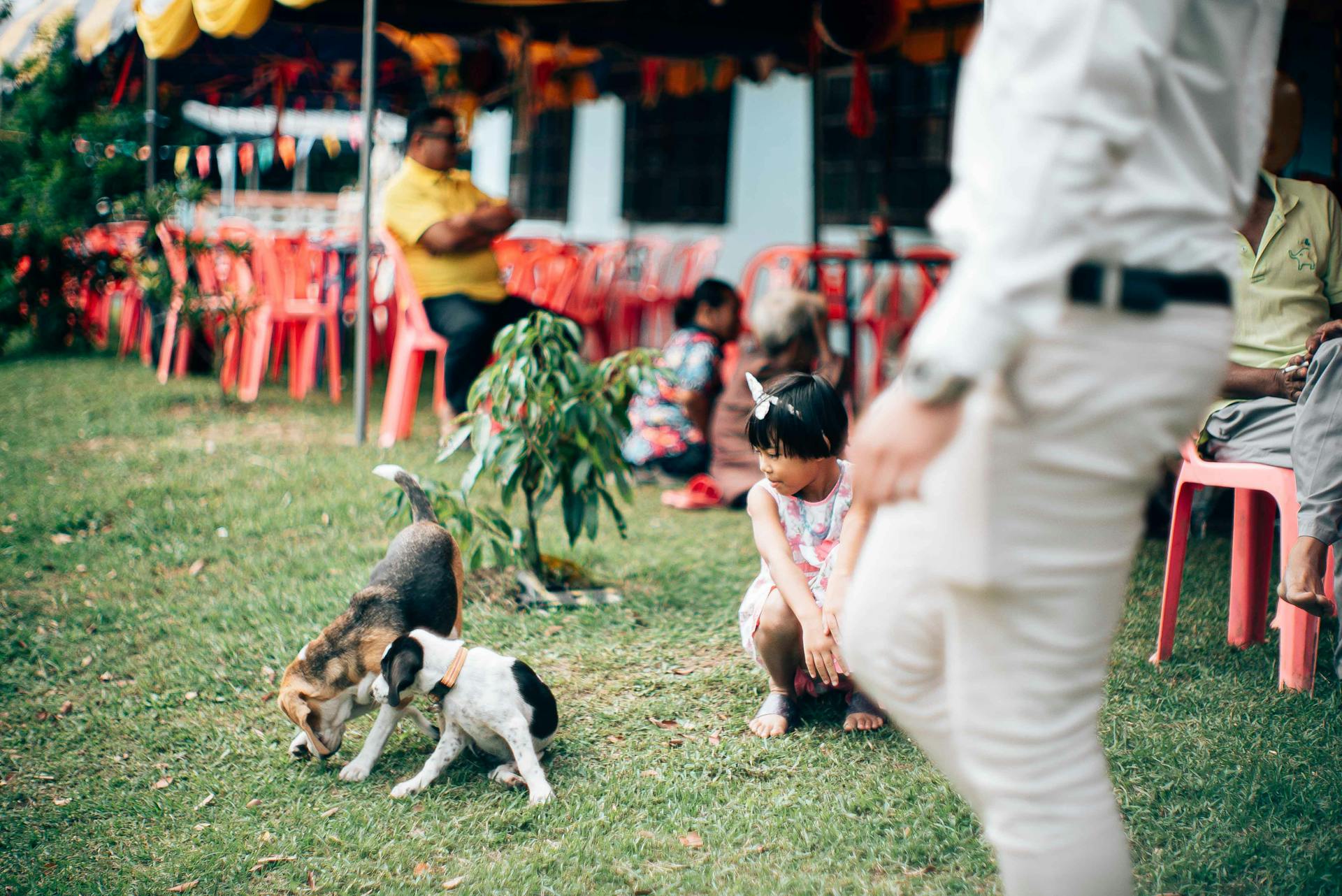
Dogs have been a part of human culture for thousands of years, and their depictions in art and literature reflect their significance in our lives.
Ancient civilizations such as Egypt and Greece revered dogs as sacred animals, often depicting them in art as loyal companions and hunters.
The Egyptians, in particular, worshipped a dog-headed god named Anubis, who was associated with protection, mummification, and the afterlife.
Dogs were also often shown in ancient Greek art as symbols of loyalty and fidelity.
In contrast, the Romans viewed dogs as fierce hunters and war dogs, often depicting them in art as powerful and intimidating animals.
In modern times, dogs are often depicted in popular culture as beloved family pets and loyal companions, as seen in countless films, TV shows, and advertisements.
The iconic image of a dog as a faithful friend has been perpetuated in media, with many famous movies and TV shows featuring dogs as main characters or central to the plot.
Intriguing read: Ancient Roman War Dogs
Ancient Civilizations
In ancient civilizations, dogs held significant places in society. They were often seen as guardians and protectors, symbolizing loyalty and bravery.
The Egyptians, Greeks, and Romans all revered dogs for their protective nature. In Egyptian art, the god Anubis was often portrayed with the head of a jackal or dog, highlighting their role in guiding souls to the afterlife.
Dogs were also featured in various forms of pottery, statues, and mosaics, symbolizing loyalty, companionship, and protection. In Greek mythology, Cerberus, the three-headed dog, guarded the entrance to the underworld, reinforcing the idea of dogs as guardians.
Here are some examples of how dogs were depicted in ancient civilizations:
- Painting of Endymion and Selene with a dog, "House of the Dioscuri", Pompeii
- Glazed ceramic dog from Eastern Han, 1st century CE
- Han dynasty terracotta dog, tomb figurine, 1st century BCE
- Court ladies playing with a small dog, Beauties Wearing Flowers by Tang dynasty painter Zhou Fang
- Image of a goddess identified as Hecate or Artemis alongside a dog (Archaic Greece)
- Greek terracotta statue dog with puppy
- A pet dog's footprint and small sculpture on a Roman terracotta
- Riders and dogs. Ancient Greek Attic black-figure hydria, ca. 510–500 BC, from Vulci. Louvre Museum, Paris.
- Roman artwork inspired by Greek classical models, ca. 125 AD. From the Villa Adriana, near Tivoli.
- Roman terracotta dog
- Cave canem! Watchdog from the House of Paquius Proculus, Pompeii
- Roman cameo of dog
- Statue of Roman sight-hounds
Mesopotamia
In ancient Mesopotamia, the dog was not as prominent as in other civilizations, but it still played a significant role in the culture. The dog was associated with female deities, as seen in ancient Sumeria, where the goddesses Artemis and Hecate kept dogs.
In Mesopotamia, dogs were primarily used for hunting and protection. However, there is limited information available about the specific role of dogs in Mesopotamian society.
See what others are reading: Dogs in Ancient China

The dog was associated with the concept of loyalty and bravery, as seen in ancient Greece and Rome, where dogs were valued for their faithfulness and courage. In Mesopotamia, dogs were likely valued for similar reasons, although the extent of their importance is unclear.
The earliest evidence of dog domestication in Mesopotamia dates back to around 12,000 BCE, similar to ancient China. However, the specific details of dog domestication in Mesopotamia are not well-documented.
Dogs were likely used as companions and guards in Mesopotamian households, similar to ancient Greece and Rome. However, the extent of their use in this capacity is unclear.
Here is a brief overview of the types of dogs mentioned in the article sections:
- Hunting dogs
- Molossus dogs
- Small companion dogs
- Greyhounds
It's worth noting that the information available about dogs in Mesopotamia is limited, and much of what we know comes from indirect sources and comparisons with other ancient civilizations.
Mesoamerica
In Mesoamerica, dogs were not just pets, but also held sacred status in the cultures of the Maya, Aztecs, and Tarascans.
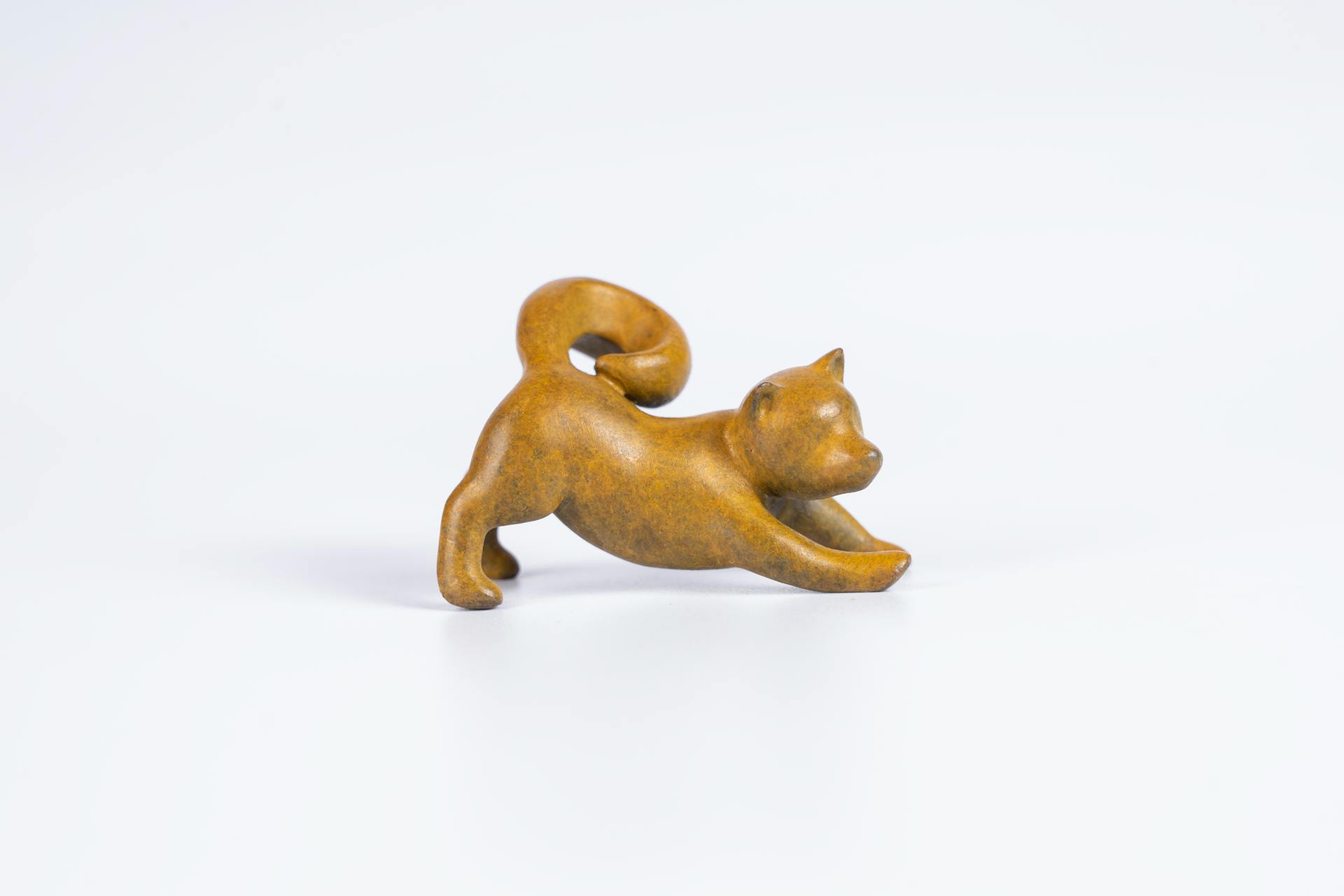
Dogs were bred for food, hunting, and as guardians, and were associated with the gods. They were even believed to conduct the souls of the dead across the watery expanse to the afterlife.
The Maya thought dogs were great swimmers, and that's why they were tasked with guiding the deceased through the challenges of the afterlife. The dog's role was to help the deceased reach paradise.
In the Quiche Maya holy book, the Popol Vuh, dogs are instrumental in the destruction of an ungrateful and unknowing race of humans. The gods first produced and then repented of this early human race, and dogs played a key part in their downfall.
The Aztecs also had a story about the destruction of an early human race, in which dogs are featured. According to this myth, dogs pre-date the present race of human beings and should be treated with respect.
The Aztecs buried dogs with their dead, and their god of death, Xolotl, was imagined as a huge dog. This highlights the importance of dogs in Aztec culture.
The Tarascans kept dogs as pets, for hunting, and for food, just like the Maya and Aztecs. They also linked dogs with the gods and the afterlife.
The Tarascans believed that spirit dogs would ensure the safe passage of those who died without proper burial to the afterlife. This myth allayed the fear of ghosts returning to trouble the living.
If this caught your attention, see: Dogs in Mesoamerican Folklore and Myth
Celtic and Norse

In Celtic and Norse cultures, dogs were considered semi-divine and associated with protection, healing, and the afterlife. They were often buried with their masters as protectors and guides.
The Celtic goddess Tuirrann was transformed into the first Irish Wolfhound, a powerful breed that still exists today. Dogs were also associated with the goddess Nehalennia, who was revered for her healing and prosperity powers.
In Norse culture, the dog Garm was believed to guard the afterlife of Hel, keeping the dead souls in and the living out. Dogs were also associated with the goddess Frigg, who was often depicted in a chariot pulled by dogs.
Dogs feasted at the feet of their warrior masters in the great hall of Valhalla after death, a testament to their revered status. More dog remains have been found in excavated Norse burial sites than in any other culture.
A different take: Pop Culture Dog Names
Medieval Period
During the Middle Ages, dogs symbolized faith and loyalty, often representing marital fidelity in art. A dog in a portrait of a married couple could signify the couple's commitment to each other.
In Jan van Eyck's Arnolfini Portrait, a small dog is depicted in the woman's lap, representing faithfulness, devotion, or loyalty. The dog's gaze meets the viewer's, making it a striking element in the painting.
Dogs were also carved on tombstones to represent the deceased's feudal loyalty or marital fidelity.
Middle Ages
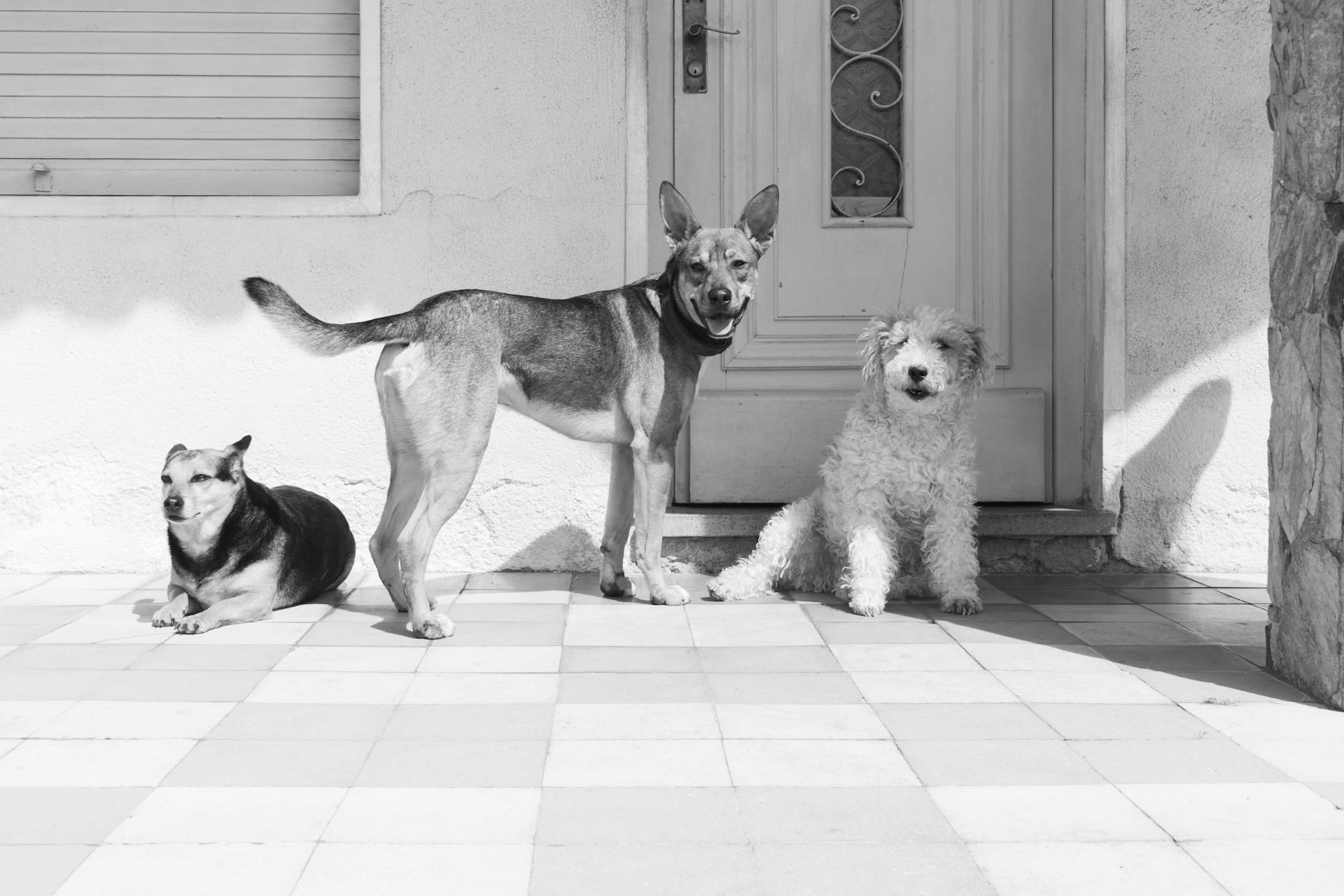
During the Middle Ages, dogs symbolized faith and loyalty, representing fidelity personified in allegorical paintings.
A dog placed in a woman's lap or at her feet in a portrait could signify marital fidelity, especially if the woman was a widow. This is evident in Jan van Eyck's Arnolfini Portrait, where the little dog represents faithfulness, devotion, or loyalty.
Images of dogs were often carved on tombstones to represent the deceased's feudal loyalty or marital fidelity, reflecting the importance of these values during this time.
Dogs were also used as symbols in painting, as seen in Jan van Eyck's Arnolfini Portrait, where the dog looks out to meet the gaze of the viewer.
Stories
Medieval people loved telling stories, and it's no wonder why. They were a great way to pass the time, especially for those who couldn't read or write.
Tales of chivalry and honor were extremely popular, often featuring knights and their noble deeds. These stories helped shape the code of conduct for the nobility.
The most famous stories of the time were often based on Christian mythology and the Bible. Many of these stories were retold and adapted into plays and performances.
Medieval people also enjoyed listening to traveling minstrels who would sing and play music while sharing tales of adventure and romance.
A fresh viewpoint: Dog Person and Cat Person
Hunting and Heraldry
Hunting scenes were a common topic in medieval and Renaissance art, often featuring the aristocracy with their hunting dogs, hawks, or falcons. This signalled their status, as only the nobility was allowed to hunt.
In medieval England, wild bears were hunted to extinction due to the popularity of hunting with dogs during this period. Hunting dogs were a symbol of aristocracy, and different breeds were used for different types of hunting.
Dogs were also used as symbols in heraldry, often representing courage, vigilance, loyalty, and fidelity. The Talbot crest, featuring a white hound, was used by several noble families, including the 1st Earl of Shrewsbury.
A fresh viewpoint: Dachshunds Hunting Badgers
Hunting Scenes
Hunting scenes in medieval and Renaissance art were a big deal, and for good reason. They signaled status, with depictions of people with hunting dogs, hawks, or falcons indicating wealth and nobility.
Hunting dogs were a key part of this scene, and only the nobility was allowed to hunt with them. This meant that different breeds of dogs were used for different types of hunting.
Wild bears were hunted to extinction in England due to the popularity of hunting with dogs during the Middle Ages.
You might enjoy: Good Dog Food for Hunting Dogs
In Heraldry
In heraldry, dogs were often used as symbols, reflecting the aristocracy's fondness for hunting with them. The Talbot crest, featuring a white hound, was used by Sir John Talbot, the 1st Earl of Shrewsbury, in the 15th century.
The Talbot dog, a good-mannered hunting dog, is the original hound used as an English heraldic symbol and is depicted in the family arms of several noble German and English families.
16th-17th Centuries
During the 16th and 17th centuries, dogs were often depicted in art as symbols of fidelity, vigilance, and regularity in research. This perception of dogs' natural intelligence and intuition was reflected in paintings and illustrations of the time.
A notable example is the painting "Portrait of a man writing at a table" by Hendrik Martenszoon Sorgh, which features a Protestant preacher with his dog by his side. The dog represents the qualities mentioned earlier.
Dogs were also illustrated in woodcuts, such as in "The history of four-footed beasts and serpents" by Edward Topsell, published in 1658. This book showcases the diversity of dog breeds and their characteristics.
Here are some notable artworks from the 16th and 17th centuries that feature dogs:
- Portrait of a man writing at a table by Hendrik Martenszoon Sorgh (16th century)
- Johann Christof Merck's painting of a dog with a collar (1705)
- John Wootton's "A Grey Spotted Hound" (1682-1764)
- Alexandre-François Desportes' painting of a white dog (1661-1743)
These artworks demonstrate the significant role dogs played in the cultural and artistic landscape of the 16th and 17th centuries.
Modern Era
In the modern era, dogs have become an integral part of many families and communities.
Dogs have been featured in numerous films and television shows, such as "Beethoven" and "Paw Patrol", showcasing their loyalty and companionship.
These depictions often highlight the special bond between dogs and their human companions, demonstrating the importance of dogs in our lives.
Dogs have also been used in various forms of advertising, such as in commercials for pet food and toys, often emphasizing their friendly and playful nature.
Broaden your view: How Often Flea Treatment Dog
19th-20th Century Companions
In the 19th and 20th centuries, dogs became beloved companions and emotional symbols in art and culture. Artists like Sir Edwin Landseer captured the loyalty and affection between humans and their canine companions.
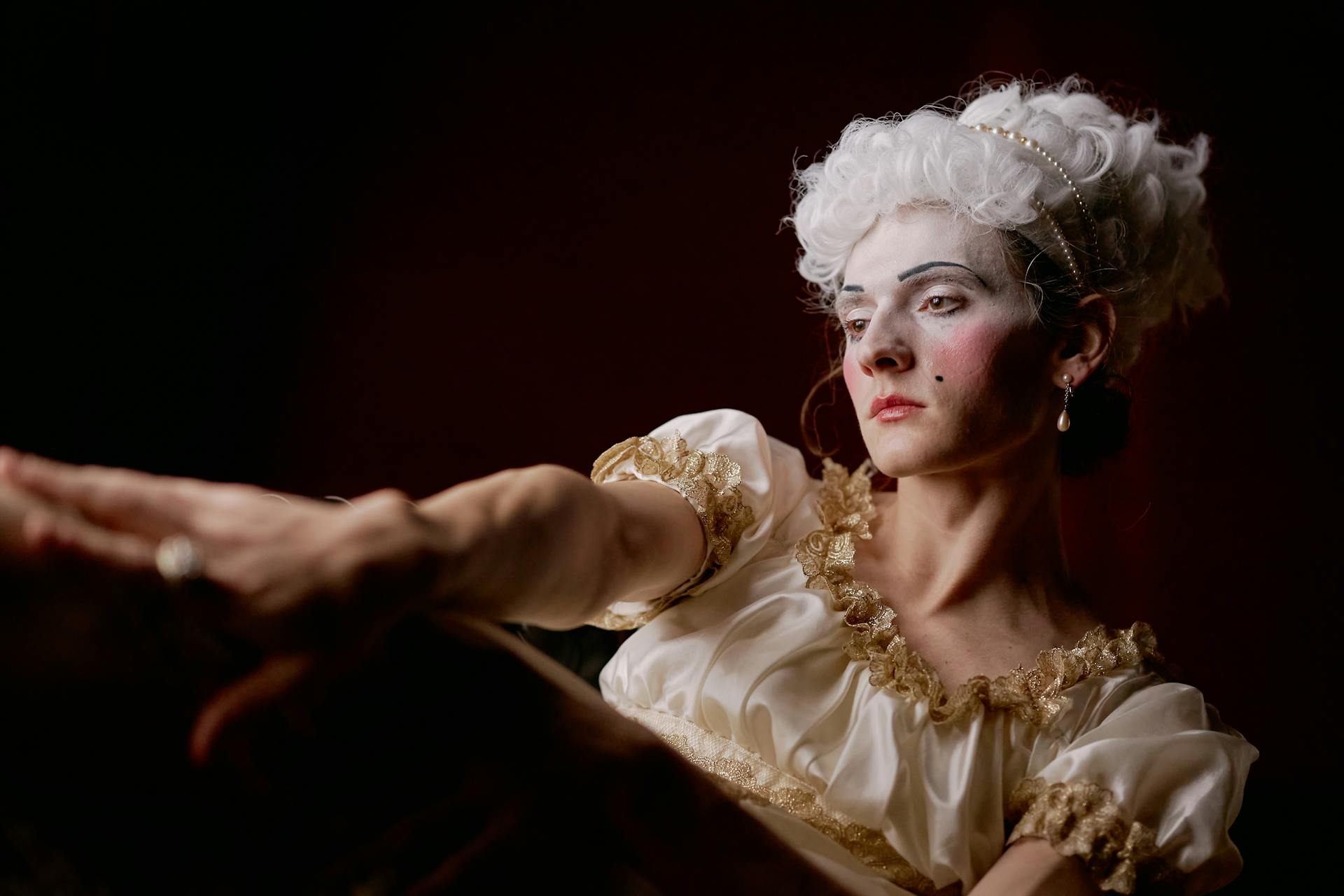
One of Landseer's most famous works, "Dignity and Impudence", depicts two dogs with contrasting personalities and emotions. This painting illustrates the range of emotions dogs can evoke in humans.
As society evolved, dogs made their way into popular culture through movies, literature, and advertising. They became iconic symbols of fidelity, devotion, and unconditional love.
Think of Lassie, Rin Tin Tin, and the iconic images of dogs waiting faithfully for their owners. These representations cemented the emotional connection between humans and dogs in modern society.
Some notable examples of dogs in popular culture include:
- Lassie
- Rin Tin Tin
- Dogs waiting faithfully for their owners
Newfoundlands with white patches are now recognized as a breed of their own, as a "Landseer", thanks to Sir Edwin Landseer's depiction of a notable Newfoundland dog named "Bob" in the 19th century.
The introduction of breed standards by The Kennel Club in the UK in 1873 and the American Kennel Club in 1884 led to a surge in popularity of dog portraits.
Contemporary
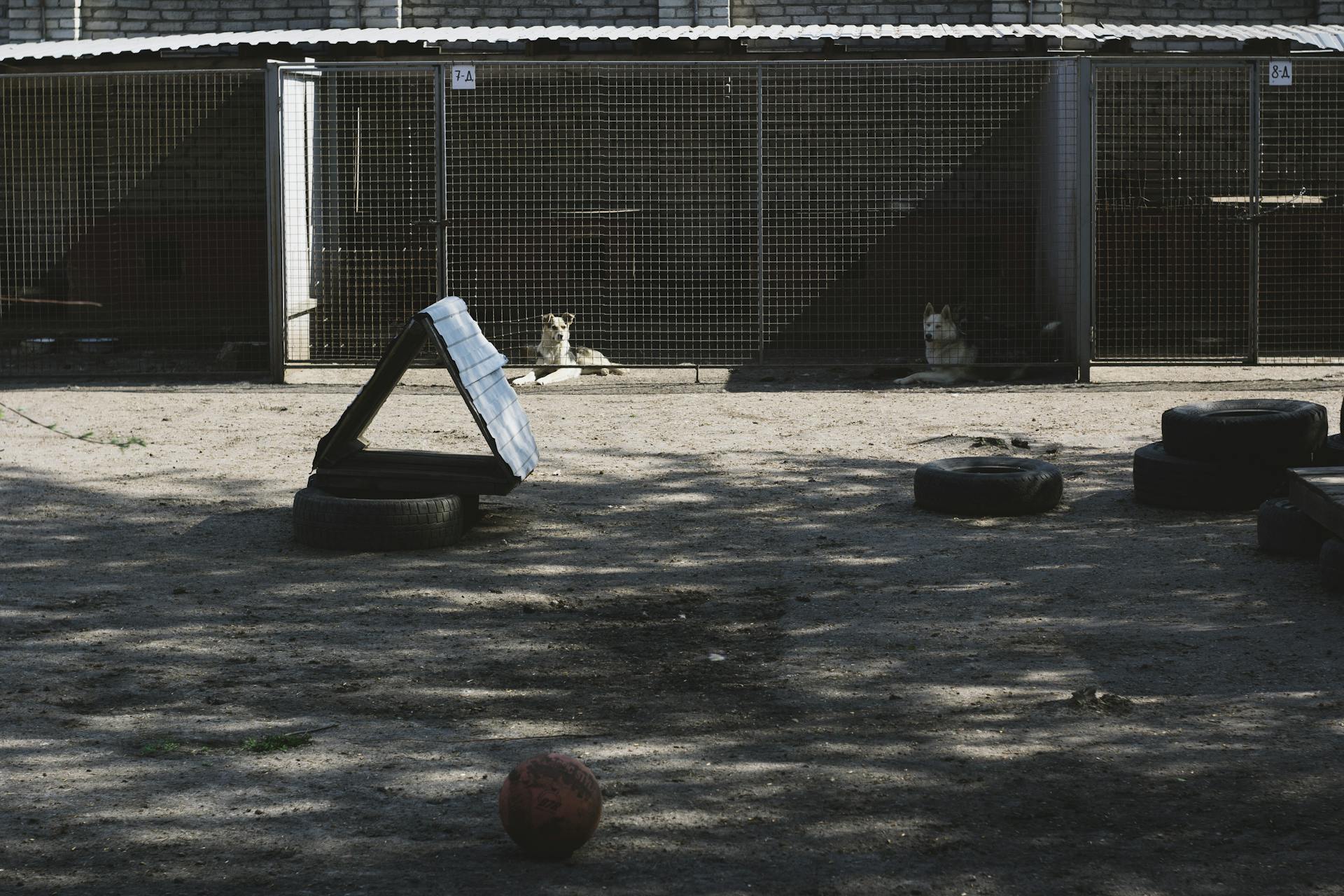
In the contemporary era, canine art has gained significant popularity, with prices increasing in the 1980s-1990s. Buyers can be categorized into three dominant groups: hunters, breeders and exhibitors of pedigree dogs, and owners of companion animals.
Pablo Picasso often featured his canine companions in his paintings, with a notable example being his Dachshund, Lump, who belonged to David Douglas Duncan but lived with Picasso.
Dogs have also extended into the art form of photography, with notable examples like Elliott Erwitt's work showcasing their presence in this medium.
Expand your knowledge: Xoloitzcuintli Aztec Art
Picture Gallery
Dogs have been a popular subject in art for centuries. Let's take a look at some of the many paintings of dogs as companions.
In the 19th century, artists like Pompeo Batoni and Briton Rivière painted dogs alongside their human owners. For example, Batoni's portrait of Sir Wyndham Knatchbull-Wyndham features a whippet, while Rivière's "Requiescat" shows a dog resting in peace.
Some paintings focus specifically on dogs as the main subject. Gerrit Dou's "Sleeping Dog" from 1650 is a great example of this.
Broaden your view: Dogs in Renaissance Paintings
The article also highlights some notable paintings of dogs by lesser-known artists. For instance, the portrait of a man with a beer, kite, and his dogs is a charming piece that showcases the artist's attention to detail.
Here's a list of some notable paintings of dogs from the article:
- Paintings of dogs as a companion: Jean-Léon Gérôme's "Diogenes with dogs" and Louis Meijer's self-portrait with his dog.
- Paintings of dogs: Gerrit Dou's "Sleeping Dog" and Henri Van Assche's "Portrait of a dog, seated on a red cushion".
Art and Symbolism
In art, dogs often symbolize status, wealth, and power. This is evident in the Renaissance period, where dogs were depicted alongside prominent figures in paintings, emphasizing their status and wealth.
During this time, owning a dog was considered a luxury and a symbol of power, as seen in Diego Velazquez's painting "Las Meninas", where a small dog is shown at the foot of the princess, symbolizing her status.
Dogs were also commonly depicted in hunting scenes, showcasing the aristocratic pastime of hunting with dogs.
In some artworks, dogs are portrayed as loyal companions to their owners, such as in "Loyal Subjects: A Bust of Queen Victoria Surrounded by Some of Her Dogs" by Frances Caroline Fairman.
Worth a look: Loyal Heart Dog
Here are some notable artworks featuring dogs and their symbolism:
- Loyal Subjects: A Bust of Queen Victoria Surrounded by Some of Her Dogs
- Lord Windsor’s Dog, 'Banquo'
- 'Phillis', a Pointer of Lord Clermont's
- 'Windsor Castle in Modern Times': Queen Victoria and Prince Albert, with His Favourite Greyhound, 'Eos', and Terrier, 'Dandit', and Victoria, the Princess Royal
These artworks demonstrate how dogs were used to convey social status and power in the past.
Frequently Asked Questions
What are the cultural uses of dogs?
Dogs are valued for their loyalty, used for various tasks, and considered family members in different cultures worldwide. Their roles range from companionship to working animals, such as hunting, herding, and guarding.
Sources
- https://en.wikipedia.org/wiki/Cultural_depictions_of_dogs
- https://www.worldhistory.org/article/184/dogs-in-the-ancient-world/
- https://artuk.org/discover/stories/art-gone-to-the-dogs-canine-portraiture-in-modern-britain
- https://www.simondickinson.com/2021/01/27/dogs-in-art-barking-mad/
- https://medium.com/@flakio/dogs-in-art-and-culture-canine-representations-throughout-history-a6c165867aec
Featured Images: pexels.com


